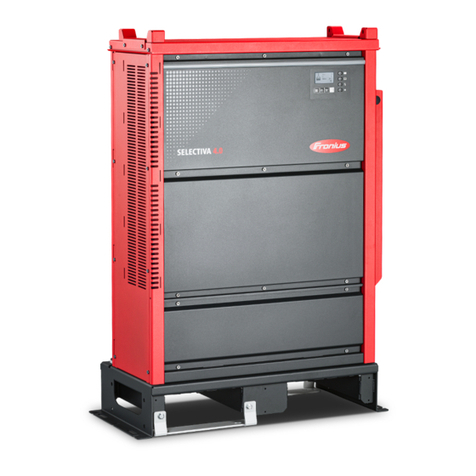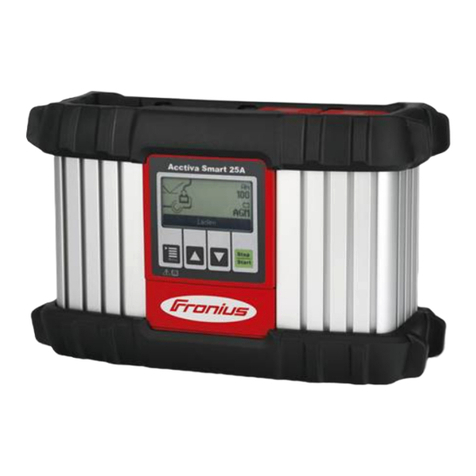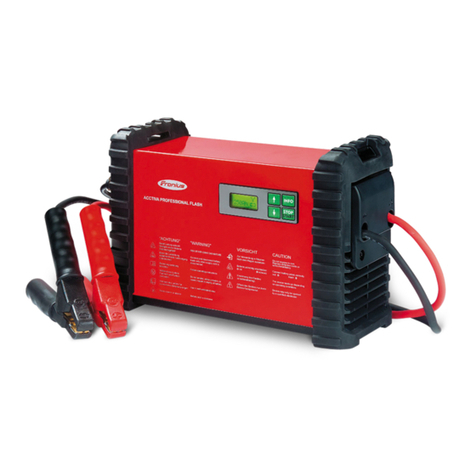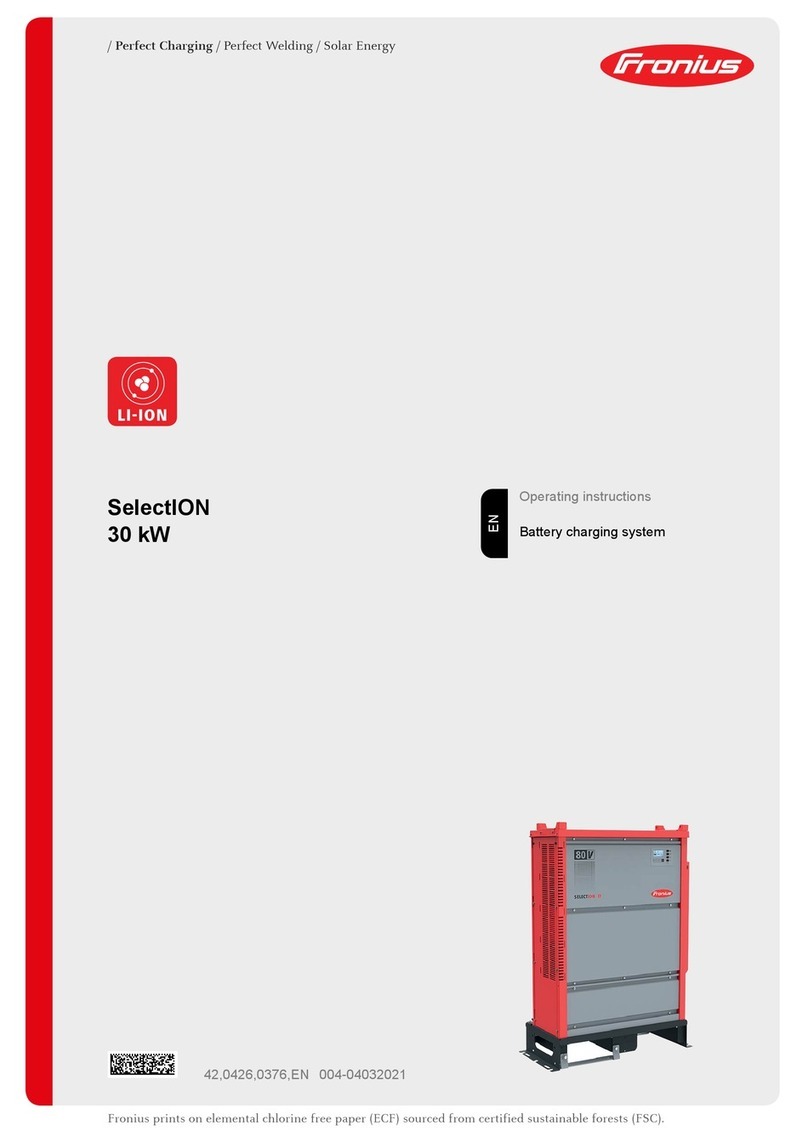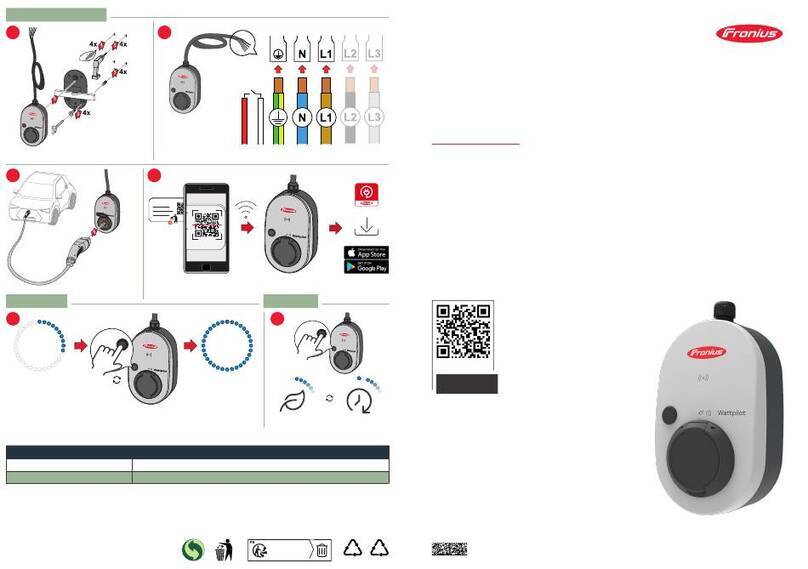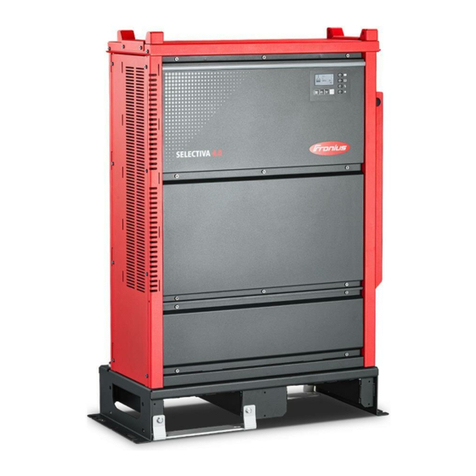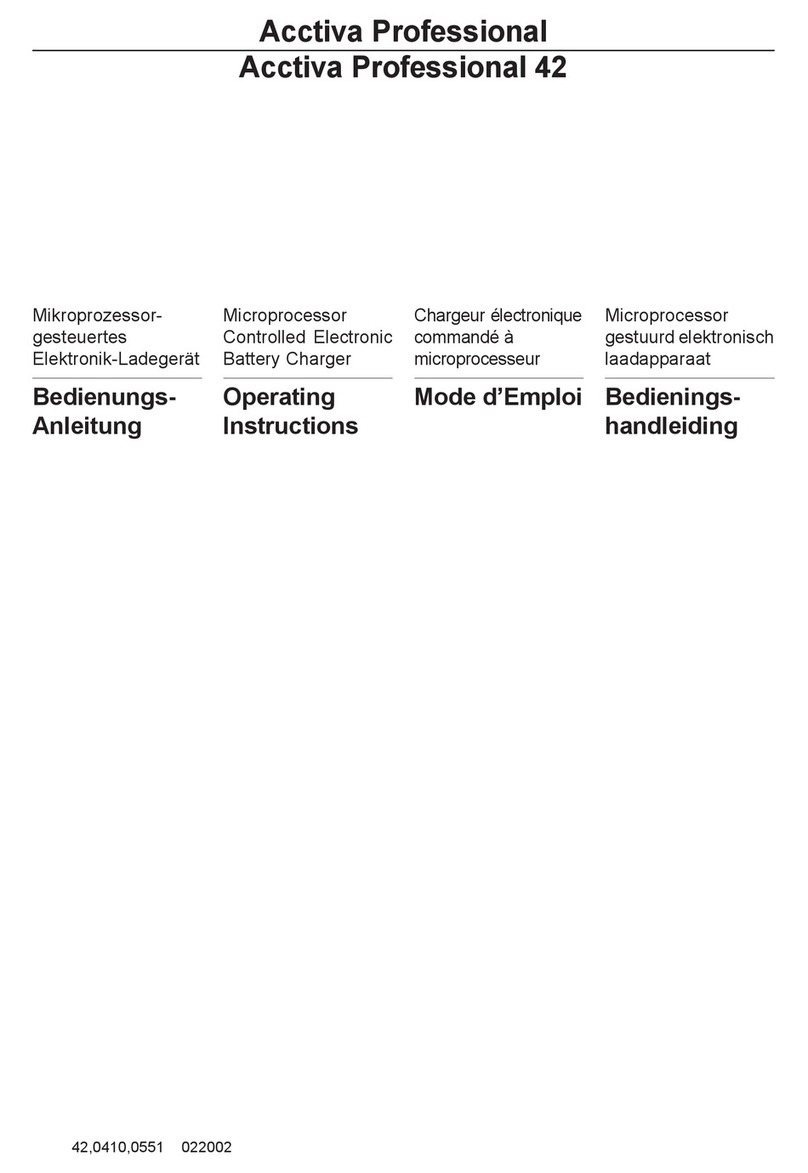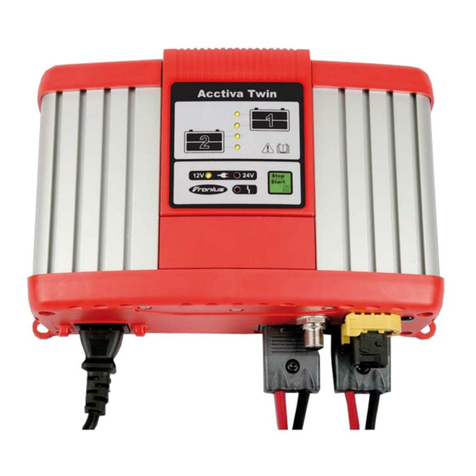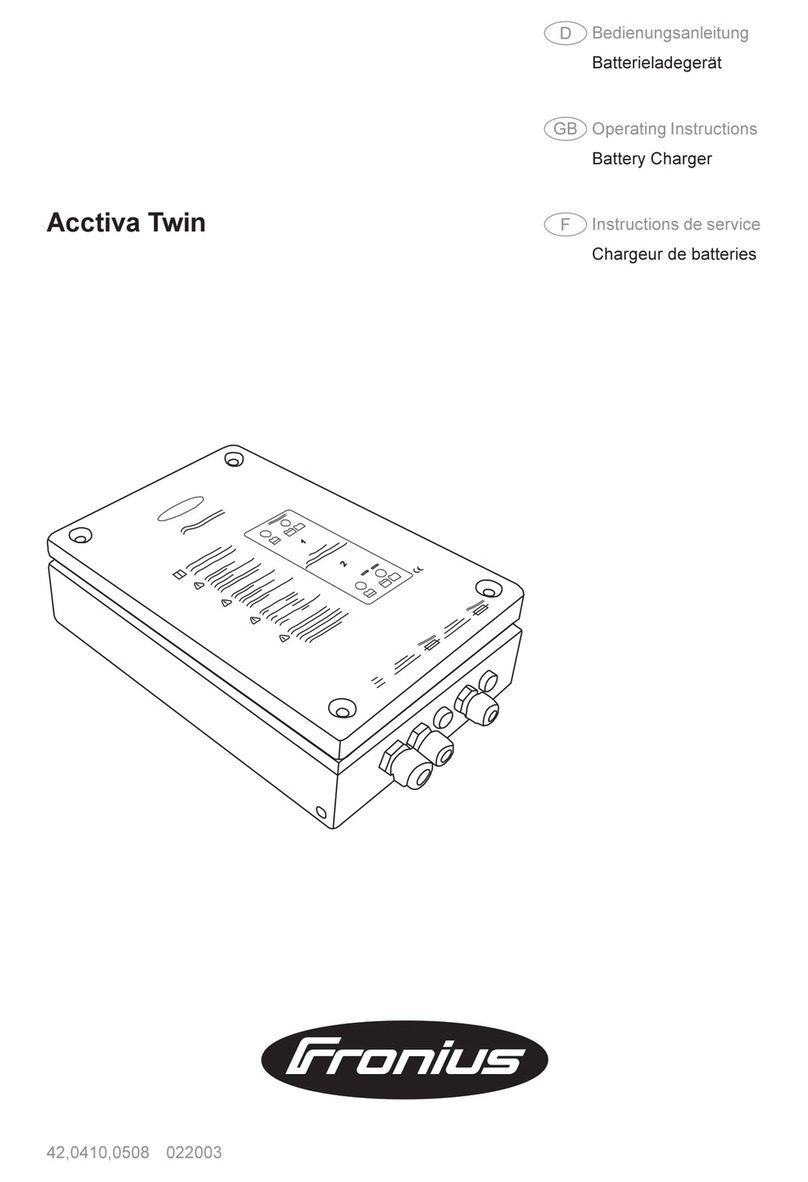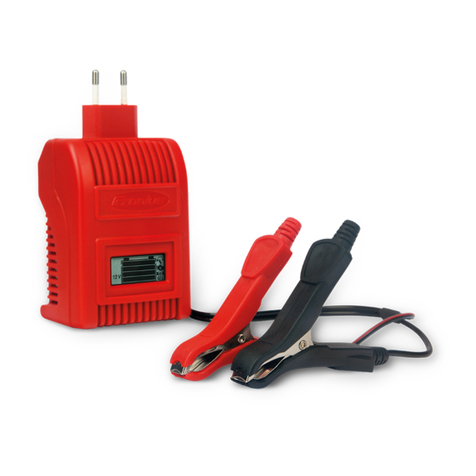
Mains connec-
tion
Devices with a higher rating may affect the energy quality of the mains due to
their current consumption.
This may affect a number device types in terms of:
-Connection restrictions
-Criteria with regard to the maximum permissible mains impedance *)
-Criteria with regard to the minimum short-circuit power requirement *)
*) at the interface with the public grid
see "Technical data"
In this case, the plant operator or the person using the device should check
whether the device may be connected, where appropriate by discussing the mat-
ter with the power supply company.
IMPORTANT! Ensure that the mains connection is earthed properly
The mains voltage tolerances of the devices may deviate from those specified in
the technical data depending on the mains connection.
Dangers due to
grid and char-
ging current
Working with battery chargers poses a number of dangers, such as:
-Electrical hazard due to grid and charging current
-Hazardous electromagnetic fields that may pose a risk of death for individu-
als with pacemakers.
An electric shock can be fatal. Every electric shock poses a risk of death. To pre-
vent electric shock during operation:
-Do not touch any voltage-carrying parts inside or outside of the device.
-Never touch the battery poles.
-Do not short-circuit the charging cable or charging terminals.
All cables and leads must be secured, undamaged, insulated, and adequately di-
mensioned. Loose connections, scorched, damaged, or under-dimensioned
cables and leads must be repaired immediately by an authorized specialist.
Danger due to
acid, gases and
vapours
Batteries contain acids which pose a risk to the eyes and skin. Furthermore, char-
ging batteries produces gases and vapors that may be hazardous to your health
and are highly explosive under certain circumstances.
Only use battery chargers in well ventilated rooms in order to prevent the accu-
mulation of explosive gases. Battery charging rooms are not considered at risk of
explosion if a hydrogen concentration of less than 4 % is guaranteed by natural or
artificial ventilation.
During charging, observe a minimum distance of 0.5 m (19.69 in.) between the
battery and battery charger. Keep potential sources of ignition such as fire and
open flames away from the battery.
Never disconnect the battery (e.g., charging terminals) during charging.
Never breathe in the gases and vapors produced by the battery – ensure there is
a sufficient supply of fresh air.
Do not place any tools or electrically conductive metals on the battery, in order
to prevent short circuits.
Never allow battery acid to come into contact with your eyes, skin, or clothing.
Wear eye protection and appropriate protective clothing. Rinse away any
6
